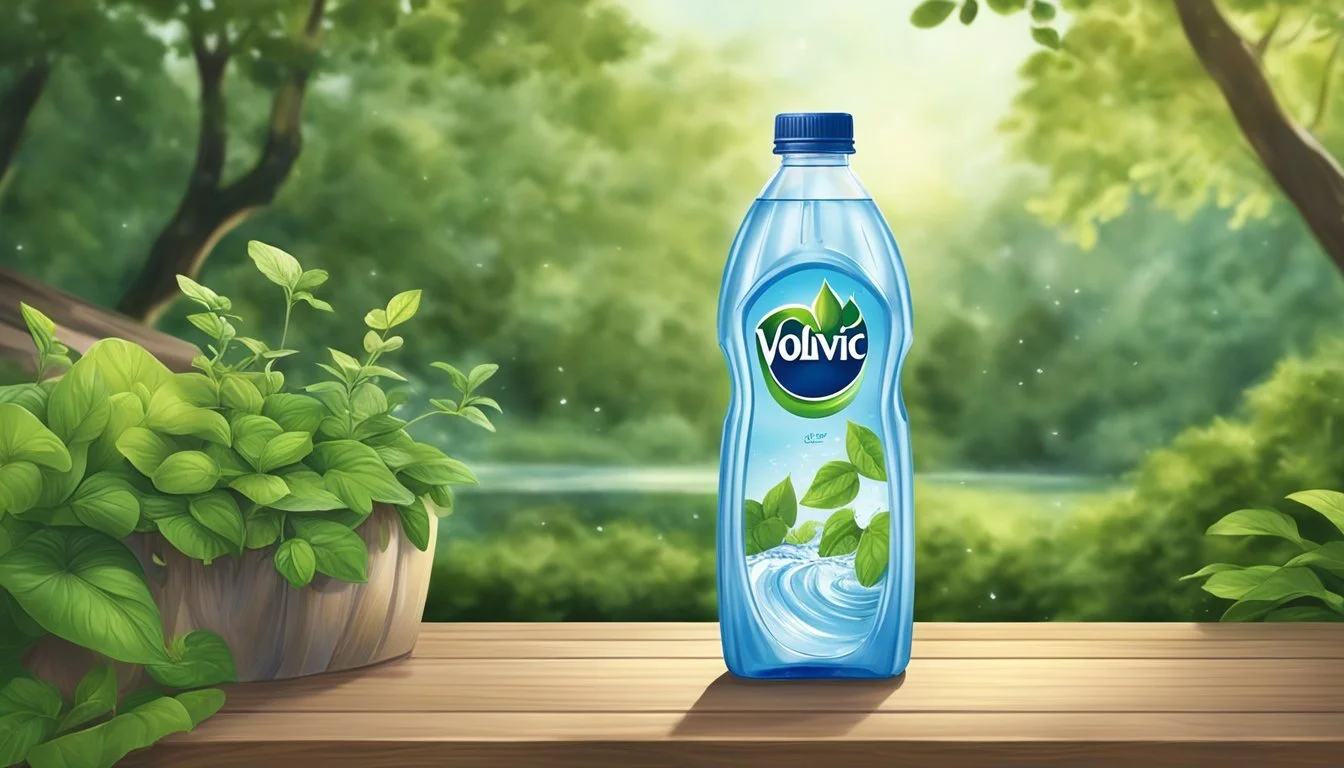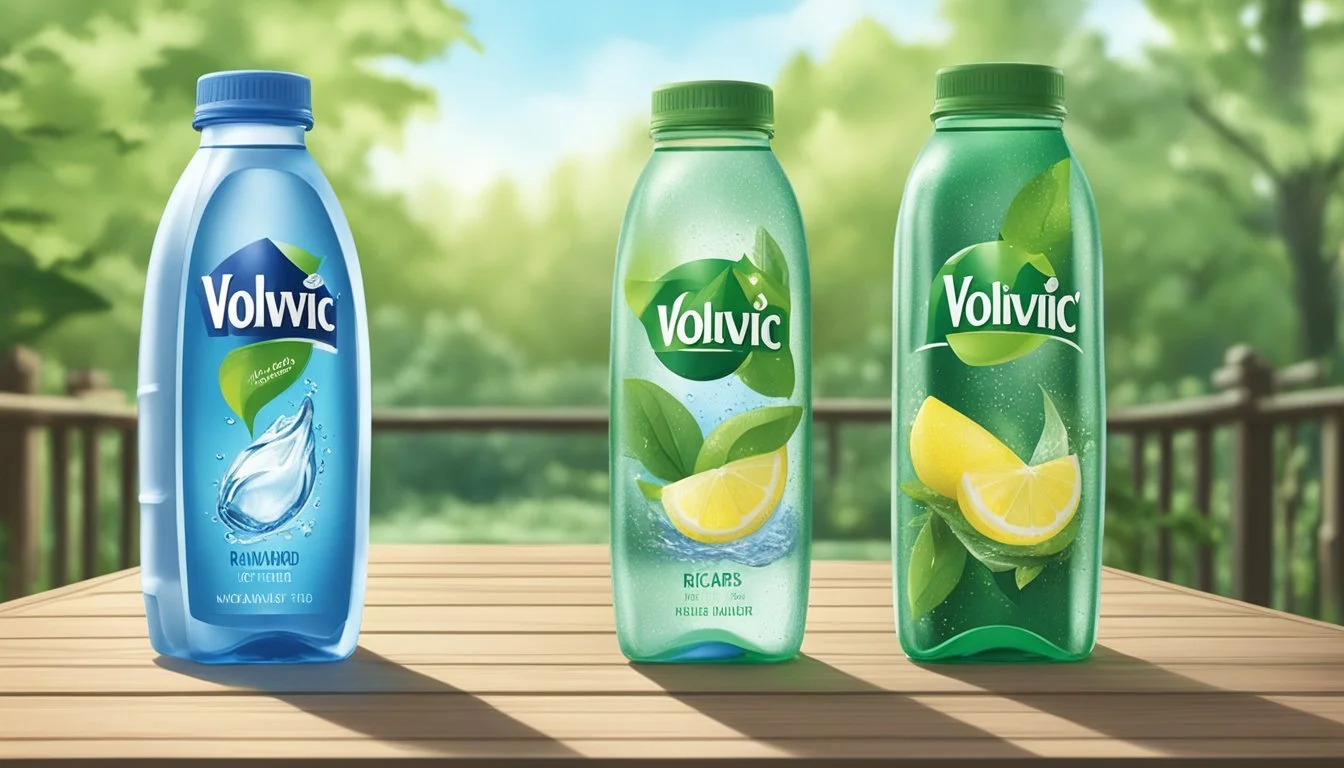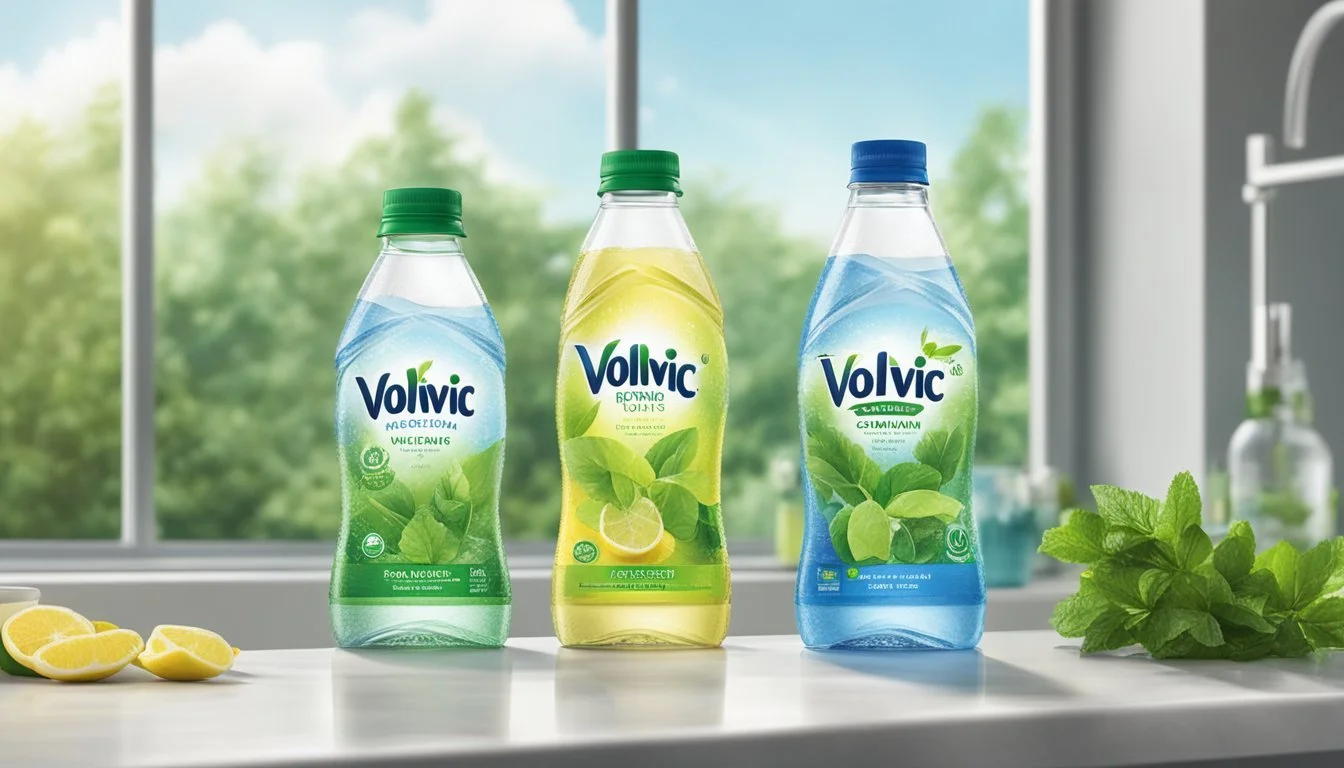Volvic vs. Richard’s Rainwater
Evaluating the Superior Choice of Bottled Water
Choosing the right bottled water can significantly impact your hydration habits and overall health. Volvic and Richard's Rainwater are two brands that frequently come up in discussions, each boasting unique qualities. Volvic, sourced from the Clairvic Spring in France, is renowned for its balanced pH and high mineral content, providing a smooth and refreshing taste.
Richard's Rainwater, on the other hand, is collected from rain, purified, and bottled, offering an eco-friendly option with its naturally soft and clean flavor. When weighed against each other, the key distinction lies in their sources and the ecological impact of their production processes. For health-conscious consumers and eco-friendly advocates, understanding these nuances can help in making an informed choice.
By diving into the specifics of what each brand offers, this article aims to shed light on which bottled water might be better suited to your needs. Both Volvic and Richard's Rainwater have distinct advantages, making the decision ultimately hinge on personal preferences and values.
Origin and Source Comparison
Volvic and Richard’s Rainwater boast unique origins that significantly impact the quality and characteristics of their bottled water. These differences highlight their distinct methods of natural filtration and collection, making each brand appealing in its own way.
Volvic: Volcanic Natural Filtration
Volvic water is sourced from a single natural spring in the Auvergne region of France. This region is known for its volcanic landscape, which plays a crucial role in the water's purification process.
Water percolates through six layers of volcanic rock, naturally filtering out impurities and enriching it with essential minerals. This process gives Volvic its distinct, clean taste and high purity.
Volvic’s reliance on natural geological filtration ensures consistent quality and a unique mineral composition. The volcanic origin imparts a slightly alkaline pH, which is often sought after for its potential health benefits.
Richard's Rainwater: Harvesting from the Clouds
Richard’s Rainwater takes a different approach by collecting and bottling pure rainwater. This method involves capturing rain directly before it touches the ground, an innovative practice that emphasizes purity from the source.
Rainwater is collected in specially designed facilities which ensure minimal contamination. Stringent filtration and purification processes then make certain that the bottled product is exceptionally clean and free from pollutants.
This technique of harvesting from the clouds provides Richard’s Rainwater with a natural, unadulterated taste that is both refreshing and eco-friendly. The use of rainwater contributes to the sustainability aspect as it utilizes a renewable resource.
With these distinct origins, both Volvic and Richard’s Rainwater offer unique qualities that cater to varying consumer preferences for safety, purity, and environmental impact.
Environmental Impact and Sustainability
Examining the environmental impact and sustainability of Volvic and Richard's Rainwater involves looking into their sourcing practices, packaging methods, and the use of renewable resources. These key aspects determine their overall eco-friendliness and the implications for our environment.
Sustainable Sourcing Practices
Volvic sources its water from natural springs located in the Volvic region of France, known for its unique volcanic filtration process. This method ensures a steady supply of pure water while preserving the surrounding ecosystem.
Richard’s Rainwater, on the other hand, collects rainwater before it hits the ground, minimizing disturbance to natural water bodies. This approach reduces the strain on groundwater resources and utilizes a renewable source, making it an environmentally-conscious option.
Packaging and Carbon Footprint
Volvic uses plastic bottles made from PET (polyethylene terephthalate), which are infinitely recyclable. They have also committed to using a higher percentage of recycled PET in their bottles. However, the production and recycling processes still carry a significant carbon footprint.
Richard’s Rainwater utilizes aluminum cans and glass bottles, both of which are infinitely recyclable. Aluminum production does have a high initial energy cost, but the metal can be reused countless times with minimal degradation. Glass, while heavier and more energy-intensive to transport, is also a sustainable option due to its recyclability.
Ecosystems and Renewable Resources
Volvic ensures minimal environmental disruption by maintaining a careful balance when extracting water. They work with local authorities to monitor and sustain the ecological health of the region.
Richard’s Rainwater not only uses rainwater, which is a renewable resource, but also focuses on eco-friendly practices like low-impact collection and purification processes. This approach supports the preservation of local ecosystems and promotes sustainable water usage.
Both brands emphasize environmental responsibility, but the methods and impacts of their practices differ significantly.
Product Varieties
Volvic and Richard’s Rainwater both offer diverse product varieties tailored to different consumer preferences. They provide options in both still and sparkling waters, and they utilize various packaging materials, including glass, plastic, and cans, to meet sustainability goals and market demands.
Still vs. Sparkling Options
Volvic offers a comprehensive range of bottled waters, including still and sparkling varieties. Known for its natural mineral content, Volvic’s still water is a popular choice for those seeking a pure and refreshing hydration option.
In contrast, Richard's Rainwater exclusively markets rainwater collected and purified from natural rainfall. Their lineup includes both still and sparkling rainwater options.
Sparkling rainwater, a unique product, is particularly popular for its clean taste and natural effervescence. This variety provides a distinct drinking experience compared to traditional carbonated waters.
Bottle Material Types
Volvic utilizes various packaging materials, including plastic bottles and glass options. While plastic bottles are more widely available and convenient for on-the-go consumption, glass bottles are marketed as a more sustainable and premium option.
Richard’s Rainwater places a strong emphasis on eco-friendly packaging. Their products are available in both glass bottles and cans. Glass is favored for its recyclability and premium feel, while cans offer a lightweight and highly recyclable alternative.
Choosing between glass and cans often comes down to personal preference and environmental considerations, with both materials offering distinct benefits.
Health and Quality Considerations
Volvic and Richard's Rainwater both aim to provide clean drinking water with high-quality standards. This section examines the filtration and purification processes, bottled water standards, and the presence of chemicals and contaminants in each brand.
Filtration and Purification Processes
Volvic sources its water from volcanic rocks in France and undergoes minimal filtration to preserve its natural mineral content. It uses a separate, natural filtration process through volcanic layers, ensuring the water is free of impurities while retaining essential minerals like calcium, silica, and bicarbonates.
Richard's Rainwater differentiates itself by collecting rainwater and purifying it through a multi-stage process. This includes carbon filtration, UV light treatment, and reverse osmosis, ensuring that the water remains free from contaminants. This process not only purifies but also ensures high taste quality, delivering water that is consistent and clean.
Bottled Water Standards
Both brands adhere to stringent bottled water standards to ensure safety and quality.
Volvic complies with European bottled water regulations, which often have strict guidelines for mineral content and purity levels. The company's adherence to these standards ensures that the water remains safe and healthful for consumers.
Richard's Rainwater follows U.S. standards for bottled water and additionally undergoes rigorous testing to meet and exceed these guidelines. This includes regular assessments by third-party auditors and certifications by organizations such as the FDA and NSF. As a result, consumers can be confident in the high quality of Richard’s Rainwater.
Presence of Chemicals and Contaminants
Maintaining low levels of harmful chemicals is crucial for bottled water brands.
Volvic water typically has a neutral to slightly alkaline pH, ensuring no harsh acids that can harm the stomach. It contains natural minerals but no artificial chemicals, sweeteners, or excessive sodium. According to recent data, the levels of calcium, silica, and bicarbonates enhance the water’s quality without adding impurities.
Richard's Rainwater uses advanced filtration to eliminate chemicals like chlorine and fluoride, which are commonly found in tap water. Its rigorous purification ensures that there are no detectable contaminants, making it a safe and pure choice for health-conscious consumers.
In summary, both Volvic and Richard's Rainwater demonstrate a strong commitment to health and quality, employing advanced technologies and strict standards to provide safe, clean drinking water.
Taste and Personal Preference
The choice between Volvic and Richard's Rainwater often comes down to personal taste and individual preferences for certain flavor profiles. Each brand offers unique characteristics that can appeal to different palates.
Palate Comparison
Volvic is sourced from the Auvergne volcanic region in France. Its water is known for its clean and slightly mineral taste, providing a refreshing experience. This subtle flavor results from the natural filtration process through volcanic rocks, which also contributes minerals like calcium and magnesium.
Richard's Rainwater is collected from rain and purified through advanced filtration. It is often described as smooth and crisp, with a more neutral taste compared to mineral-rich waters. Because it lacks the distinctive mineral profile found in Volvic, some consumers find it more refreshing and versatile.
Personal preferences in bottled water can be influenced by taste, the purifying process, and even psychological perceptions related to the source of the water. What one finds refreshing and tasty may vary greatly, making it essential to try each brand to determine the most enjoyable option for oneself.
Availability and Accessibility
When comparing Volvic and Richard’s Rainwater, the differences in their availability and accessibility can significantly influence consumer choice. The distribution networks and presence in both online and physical stores highlight the ease with which consumers can obtain these brands.
Retail Distribution Networks
Volvic has a well-established distribution network that includes major retailers such as Kroger, Whole Foods, Sprouts, H-E-B, and Albertsons. This widespread availability makes it easier for consumers to find and purchase Volvic water. Additionally, Volvic's presence in many independent grocers ensures accessibility in both urban and rural areas.
In contrast, Richard’s Rainwater often targets natural grocers and eco-conscious retailers. It is frequently found in stores that prioritize sustainability, such as Whole Foods and various smaller, independent natural grocers. This focus can limit its availability to regions where such retailers are prevalent but reinforces its market position among environmentally-conscious consumers.
Online and In-Store Presence
Volvic enjoys a robust online presence, being readily available through major online retailers like Amazon, as well as the online portals of its partnered physical stores. This extensive online accessibility allows consumers to purchase Volvic water conveniently for home delivery or in-store pickup.
Richard’s Rainwater also leverages online platforms but often through specialty and organic product websites. While it may not have the same level of online ubiquity as Volvic, its targeted online presence ensures that eco-conscious shoppers seeking sustainable options can readily access it. In-store availability, however, remains higher at natural grocers and specialized retail chains, which may not be as widely scattered as those carrying Volvic.
Branding and Consumer Movement
Volvic and Richard’s Rainwater have developed distinct branding strategies and approaches to consumer engagement, each reflecting the unique selling points of their products.
Marketing Strategies
Volvic positions itself as a premium brand with a focus on purity and refreshment. The unique source of Volvic water, filtered through six layers of volcanic rock, is a central part of its marketing. This emphasizes the natural and mineral-rich quality of the water.
Richard’s Rainwater, conversely, markets its product as the world's first bottled rainwater, highlighting sustainability. The brand leverages its eco-friendly process of capturing and purifying rainwater, appealing to environmentally-conscious consumers.
Community and Social Media Engagement
Volvic has a robust presence on social media platforms like Instagram, Facebook, and Twitter. They engage their audience through beautiful visuals and campaigns centered around health, fitness, and nature. User-generated content is frequently showcased, fostering a strong community connection.
Richard’s Rainwater actively engages with its community by promoting its sustainability mission. The brand effectively uses Instagram and LinkedIn to share stories, updates, and environmental impact. Their messaging often includes partnerships with environmental organizations, reinforcing their commitment to eco-friendly practices.
Overall, both brands have carved out niches that resonate with their target audiences through distinct and strategic approaches in both branding and consumer engagement.
Corporate Ethos and Leadership
Volvic and Richard’s Rainwater both pride themselves on strong corporate values and impactful leadership. These elements play a central role in shaping their brand identity and guiding their operations.
Founder Stories and Company Values
Volvic traces its origins to the volcanic region of Auvergne, France. Established in 1958, the company promotes sustainability and environmental stewardship. They emphasize the natural filtration process of their water, boasting mineral purity and ecological consciousness.
Richard’s Rainwater was founded by Richard Heinichen in 1994. He began bottling rainwater in Dripping Springs, Texas, aiming for a sustainable and eco-friendly water source. The company's values focus on reducing plastic waste and minimizing environmental impact through innovative rainwater harvesting technologies.
Both companies pivot their ethos around sustainability but through different approaches: Volvic with its natural spring and volcanic filtration, and Richard’s Rainwater with its rainwater harvesting and eco-conscious methods.
Executive Profiles
Taylor O’Neil, the current CEO of Richard’s Rainwater, brings a strong focus on expansion and sustainability. Under his leadership, the company has scaled operations while maintaining its commitment to environmental ethics and community contribution.
The leadership at Volvic includes a diverse team of executives dedicated to upholding their environmental principles. Their CEO emphasizes global market growth while adhering to sustainable practices.
These executives drive their respective companies towards achieving ambitious goals. Volvic’s leadership roots are in maintaining ecological integrity through natural resources, whereas Richard’s Rainwater focuses on innovative technology and sustainability to deliver eco-friendly solutions.
The Future of Bottled Water
The bottled water industry is evolving rapidly with advances in sustainability, market expansion, and shifting consumer preferences.
Innovations in Rainwater Collection
Richard’s Rainwater uses a proprietary zero-waste, chlorine-free filtration system to purify rainwater. This cutting-edge technology removes contaminants, making rainwater a renewable source of premium drinking water.
With each inch of rain over 1,000 square feet, they collect approximately 550 gallons of clean water. This method not only taps into a natural resource but also reduces dependency on traditional water sources.
Expanding Market Presence
Richard’s Rainwater aims to broaden its market by initiating rainwater collection in communities nationwide. This localized collection minimizes the need for transporting bottled water over long distances.
By establishing collection points in multiple regions, the company can ensure a steady supply and potentially lower costs and emissions associated with distribution.
Eco-conscious Consumer Trends
Today's consumers are increasingly eco-conscious, seeking products that align with their environmental values. Companies like Richard’s Rainwater attract these consumers by offering a net-positive environmental impact through renewable drinking water.
The trend toward sustainability is pushing more water brands to adopt greener practices, catering to a growing market of environmentally-friendly buyers.
More About Volvic
Mountain Valley Spring Water vs Volvic: Which Bottled Water is Better?
Volvic vs Kirkland Signature: Which Bottled Water is Better?
Volvic vs Whole Foods Italian Still Mineral water: Which Bottled Water is Better?
More About Richard’s Rainwater
Acqua Pana vs Richard's Rainwater: Which Bottled Water is Better?
Alkaline88 vs Richard's Rainwater: Which Bottled Water is Better?
Antipodes vs Richard's Rainwater: Which Bottled Water is Better?
Aqua Carpatica vs Richard's Rainwater: Which Bottled Water is Better?
Aquafina vs Richard's Rainwater: Which Bottled Water is Better?
Arrowhead vs Richard's Rainwater: Which Bottled Water is Better?
Boxed Water vs Richard's Rainwater: Which Bottled Water is Better?
Cascade Mountain vs Richard's Rainwater: Which Bottled Water is Better?
Castle Rock vs Richard's Rainwater: Which Bottled Water is Better?
Cirro vs Richard's Rainwater: Which Bottled Water is Better?
Core Hydration vs Richard's Rainwater: Which Bottled Water is Better?
Crystal Geyser vs Richard's Rainwater: Which Bottled Water is Better?
Deer Park vs Richard's Rainwater: Which Bottled Water is Better?
Erewhon vs Richard's Rainwater: Which Bottled Water is Better?
Essentia vs Richard's Rainwater: Which Bottled Water is Better?
Eternal vs Richard's Rainwater: Which Bottled Water is Better?
Ethos vs Richard's Rainwater: Which Bottled Water is Better?
Evian vs Richard's Rainwater: Which Bottled Water is Better?
Hawaii Volcanic vs Richard's Rainwater: Which Bottled Water is Better?
Hawaiian Springs vs Richard's Rainwater: Which Bottled Water is Better?
Ice Mountain vs Richard's Rainwater: Which Bottled Water is Better?
Icelandic Glacial vs Richard's Rainwater: Which Bottled Water is Better?
Just Water vs Richard's Rainwater: Which Bottled Water is Better?
Kroger vs Richard's Rainwater: Which Bottled Water is Better?
LIFEWTR vs Richard's Rainwater: Which Bottled Water is Better?
Liquid Death vs Richard's Rainwater: Which Bottled Water is Better?
Mananalu vs Richard's Rainwater: Which Bottled Water is Better?
Mountain Valley Spring Water vs Richard's Rainwater: Which Bottled Water is Better?
Nestle Pure Life vs Richard's Rainwater: Which Bottled Water is Better?
Origin vs Richard's Rainwater: Which Bottled Water is Better?
Ozarka vs Richard's Rainwater: Which Bottled Water is Better?
Penta vs Richard's Rainwater: Which Bottled Water is Better?
Perrier vs Richard's Rainwater: Which Bottled Water is Better?
Poland Spring vs Richard's Rainwater: Which Bottled Water is Better?
Purely Sedona vs Richard's Rainwater: Which Bottled Water is Better?
Richard's Rainwater vs 1907water: Which Bottled Water is Better?
Richard's Rainwater vs 7-Select: Which Bottled Water is Better?
Richard's Rainwater vs Action: Which Bottled Water is Better?
Richard's Rainwater vs Big Chill: Which Bottled Water is Better?
Richard's Rainwater vs Big Win: Which Bottled Water is Better?
Richard's Rainwater vs BodyArmor: Which Bottled Water is Better?
Richard's Rainwater vs CBD Living: Which Bottled Water is Better?
Richard's Rainwater vs Crystal Lake: Which Bottled Water is Better?
Richard's Rainwater vs Dasani: Which Bottled Water is Better?
Richard's Rainwater vs Essence pH10: Which Bottled Water is Better?
Richard's Rainwater vs HFactor: Which Bottled Water is Better?
Richard's Rainwater vs Kirkland Signature: Which Bottled Water is Better?
Richard's Rainwater vs Open Water: Which Bottled Water is Better?
Richard's Rainwater vs Ophora: Which Bottled Water is Better?
Richard's Rainwater vs Proud Source: Which Bottled Water is Better?
Richard's Rainwater vs Pure Life: Which Bottled Water is Better?
Richard's Rainwater vs Ramona: Which Bottled Water is Better?
Richard's Rainwater vs Refreshe: Which Bottled Water is Better?
Richard's Rainwater vs Simple Truth: Which Bottled Water is Better?
Richard's Rainwater vs Skyra: Which Bottled Water is Better?
Richard's Rainwater vs Talking Rain AQA: Which Bottled Water is Better?
Richard's Rainwater vs The Well: Which Bottled Water is Better?
Richard's Rainwater vs Weird Water: Which Bottled Water is Better?
Richard's Rainwater vs Whole Foods 365: Which Bottled Water is Better?
Richard's Rainwater vs Zenwtr: Which Bottled Water is Better?
San Pellegrino vs Richard's Rainwater: Which Bottled Water is Better?
Smartwater vs Richard's Rainwater: Which Bottled Water is Better?
Solan de Cabras vs Richard's Rainwater: Which Bottled Water is Better?
Starkey vs Richard's Rainwater: Which Bottled Water is Better?
Tahoe vs Richard's Rainwater: Which Bottled Water is Better?
Topo Chico vs Richard's Rainwater: Which Bottled Water is Better?
Tru Alka vs Richard's Rainwater: Which Bottled Water is Better?
Waiakea vs Richard's Rainwater: Which Bottled Water is Better?
Whole Foods Italian Still Mineral water vs Richard's Rainwater: Which Bottled Water is Better?
Zephyrhills vs Richard's Rainwater: Which Bottled Water is Better?








